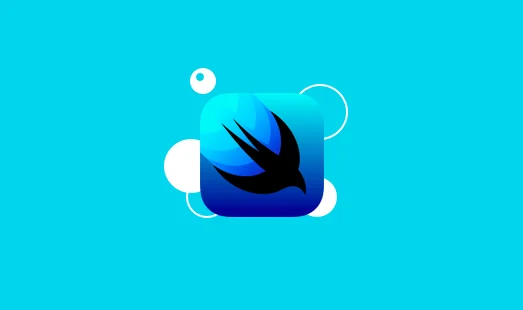这篇文章介绍了Swift语言的基础知识,包括字符型、变量类型、注释、可选类型、类型转换、元组、可选项绑定、隐式展开、Switch case、循环、字符串操作等。适合初学者进行复习和巩固。
补充一下Swift的相关知识。
字符型
字符型只能包含一个字符
查看变量的类型
单行注释和多行注释
可选类型
类型转换
在类型转换的时候可能会出现Optional类型,解决的方法为使用??语法,如果确定有值的时候可以使用!
1
2
3
4
| print(Int("123123")) -> Optional(123123)
print(Int("123123") ?? 10) -> 123123
print(Int("hello") ?? 10) -> 10
print(Int("12")!) -> 12
|
例:
1
2
3
4
5
6
7
8
9
| var a: Int? = 2
if a == nil {
print("a没有值")
}else{
print("a的值为:\(a!)")
print("a的值为:" + String(a!))
}
|
元组
元组是将多个类型的值封装到一个变量之中
1
2
3
4
5
6
7
8
9
10
11
12
13
14
15
16
17
18
19
20
21
22
23
24
25
26
27
28
29
30
31
32
33
| var a = ("hello", 12, false, 12.5)
var b: (String, Int) = ("hi", 12)
b.1 = 99
print(a.0)
print(b.1)
var c = (name1: "hi", name2: 1212)
print(c)
print(c.name1)
print(c.0)
var d: (name1: String, name2: Int) = ("hello", 12)
print(d.name1)
let (name1, name2) = ("Hello", 12)
print(name1)
let (name1, _, name2) = ("Hello", true, 12)
print(name1, name2)
|
可选项绑定
判断可选项是否为空,如果不为空则继续执行
1
2
3
4
5
6
7
8
9
10
| let hello: Int? = 12
if let txt = hello {
print(txt)
}
|
隐式展开
在已经知道该变量有值的时候,可以使用!
1
2
3
4
5
6
7
8
9
10
| let a: Int![]= 12
let b: Int = a
print(b)
let c: Int? = 14
let d = c!
print(d)
|
Switch case 和 fallthrough 穿透效果
使用fallthrough可以执行完改case后顺序执行下一个case
1
2
3
4
5
6
7
8
9
10
11
12
13
14
| let num = 11
switch num {
case 11:
print("情况1")
fallthrough
case 12:
print("情况2")
case 13:
print("情况3")
default:
print("没有匹配")
}
|
Switch case 元组拆分匹配
1
2
3
4
5
6
7
8
9
10
11
12
13
14
| let num = (12, true)
switch num {
case let(name1, false):
print(name1)
case let(12, name2):
print(name2)
default:
print("没有匹配")
}
|
switch case 使用 where 创建例外情况
1
2
3
4
5
6
7
8
9
10
11
12
13
14
15
| let a = (10, 20)
switch a {
case let(name1, name2) where name1 > name2:
print(name1 - name2)
case let(10, name2):
print(10 + name2)
default:
print("不符合要求")
}
|
每隔n个值取一个数字
1
2
3
4
5
6
7
8
9
10
11
12
13
14
15
16
17
18
19
20
21
22
23
24
25
26
27
28
29
30
31
32
33
34
35
36
37
38
39
|
for num in stride(from: 0, to: 10, by: 2){
print(num)
}
for num in stride(from: 0, through: 9, by: 3){
print(num)
}
for num in stride(from: 0, through: 9, by: 3).reversed(){
print(num)
}
|
跳过单次循环和终止本次循环
跳过循环/终止循环
1
2
3
4
5
6
7
8
9
10
11
12
13
14
15
16
17
18
| for num in 0...12 {
if num == 3 {
continue
}
if num == 5 {
break
}
print(num)
}
|
repeat while 循环
先运行一遍再判断
1
2
3
4
5
6
7
8
9
10
11
12
13
14
15
16
17
18
19
20
| var a = 0
var b = true
repeat {
print(a)
a += 1
if a == 5 {
b.toggle()
}
}while b
|
关于一些String的操作
1
2
3
4
5
6
7
8
9
10
11
12
13
14
15
16
17
18
19
20
21
22
23
24
25
26
27
28
29
30
31
32
33
34
35
36
37
38
39
40
41
42
43
44
45
46
47
48
49
50
51
52
53
54
55
56
57
58
59
60
61
62
63
64
65
66
67
68
69
70
71
72
73
74
75
76
77
78
79
80
81
82
83
84
85
86
87
88
89
90
91
92
93
94
95
96
97
98
99
100
101
102
103
104
105
106
107
108
109
110
111
112
113
114
115
116
117
118
119
120
121
122
123
124
125
126
127
128
129
130
131
132
133
134
135
136
137
138
139
140
141
142
143
144
145
146
147
148
149
150
151
152
153
154
155
156
157
158
159
160
161
162
163
164
165
166
167
168
169
170
171
172
173
174
175
176
177
178
179
180
181
182
183
184
185
186
187
188
189
190
191
192
193
194
195
196
197
198
199
200
| import Cocoa
var str = "ABCDEF"
print(str.count)
print(str[str.startIndex])
print(str[str.index(before: str.endIndex)])
print(str[str.index(after: str.startIndex)])
print(str[str.index(str.startIndex, offsetBy: 3)])
var a = str.index(str.startIndex, offsetBy: 2)
var b = str.index(str.startIndex, offsetBy: 5)
print(str[a...b])
print(str[a..<b])
var c = str.firstIndex(of: "E") ?? str.endIndex
print(str[str.startIndex...c])
print(str.prefix(4))
print(str[str.index(str.endIndex, offsetBy: -2)..<str.endIndex])
print(str.contains("CD"))
print(str.contains("G"))
print(str.contains(where: String.contains("AKK")))
print(str.contains(where: String.contains("KKK")))
print(str.hasPrefix("ABC"))
print(str.hasSuffix("EF"))
str.append("sssssssss")
print(str)
str = String(str.prefix(6))
str.insert(contentsOf: "OPQ", at: str.index(str.startIndex, offsetBy: 4))
print(str)
str = "ABCDEF"
let d = str.firstIndex(of: "B") ?? str.startIndex
let e = str.firstIndex(of: "E") ?? str.index(before: str.endIndex)
str.replaceSubrange(d...e, with: "123123")
print(str)
str = "ABCDEF"
str.replacingOccurrences(of: "ABC", with: "888")
print(str)
str = "ABCDEF"
str.remove(at: str.index(str.startIndex, offsetBy: 2))
print(str)
str = "ABCDEF"
str.removeSubrange(str.index(str.startIndex, offsetBy: 1)...str.index(str.startIndex, offsetBy: 3))
print(str)
str = "ABCDEF"
for item in str {
print(item)
}
for item in 0..<str.count {
print(str[str.index(str.startIndex, offsetBy: item)])
}
var mtxt = """
hello
world
"""
print(mtxt)
var utxt = #""hello\ntxt"#
print(utxt)
|
参考资料
Swift编程基础



























